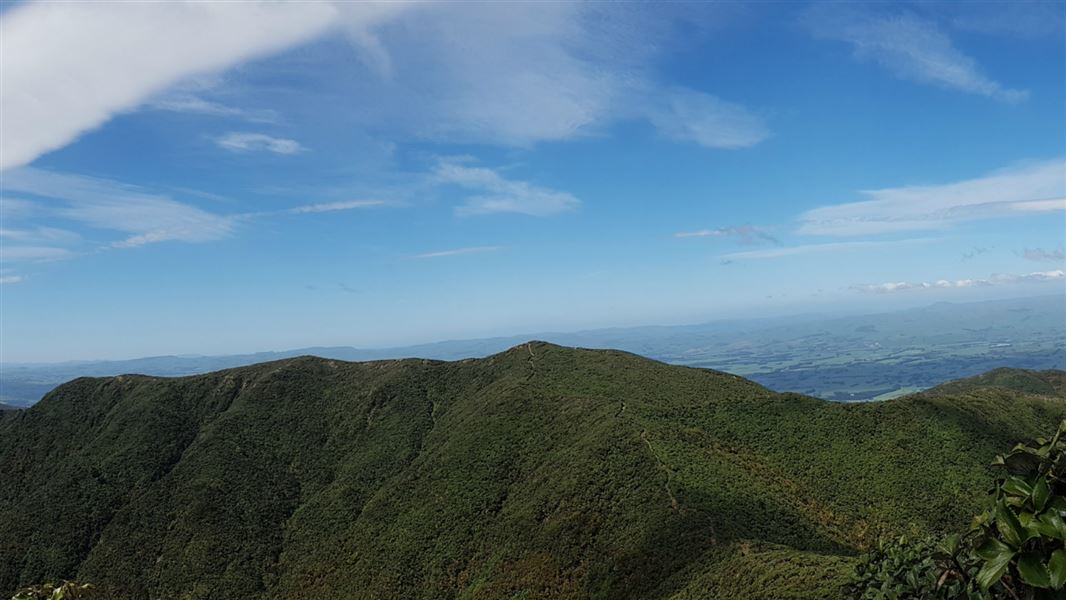This is a well defined but often muddy track that climbs steeply through typical southern Ruahine rimu, kamahi and tawa forest. Higher up the track passes through more shrubby species such as horopito, flax and pink pine. From here it heads across a series of open, rocky knolls to Mt Maharahara. The scratchy, leathery leaved shrub leatherwood is evident on the tops here. The southern Ruahine ranges have the largest, unbroken mass of leatherwood in New Zealand.
If transport has been arranged it is possible to continue on past Maharahara and complete a west-east crossing of the park coming out at either Kumeti or Fairbrothers Road. Allow 7-9 hr for these options.
From Ashhurst head north up the Pohangina Valley and turn onto the Pohangina Valley East Road. Follow this until you reach the Opawe Road turnoff on your right just before the Highland Youth Camp. The track to Maharahara crosses farm land from the end of this road.
The rata and kamahi forest that once thrived in this southern area of the park has been severely damaged over the years by possums. Introduced as early as the 1890’s, their chomping, in combination with high winds, heavy rains and slips, contributed to a major forest collapse by the 1950’s. Today the forest has more horopito, rangiora, bush lawyer and toetoe - all species possums don’t favour.
Stay safe in the outdoors
- Choose the right trip for you. Learn about the route and make sure you have the skills for it.
- Understand the weather. Check weather forecasts.
- Pack warm clothes and extra food. Check gear lists.
- Share your plans and take ways to get help. Share directly or use the Outdoor Intentions form or Plan My Walk. Take a distress beacon.
- Take care of yourself and each other.
| DOC Customer Service Centre | |
|---|---|
| Phone | 0800 275 362 |
| manawatu@doc.govt.nz | |
| Address | DOC offices |
